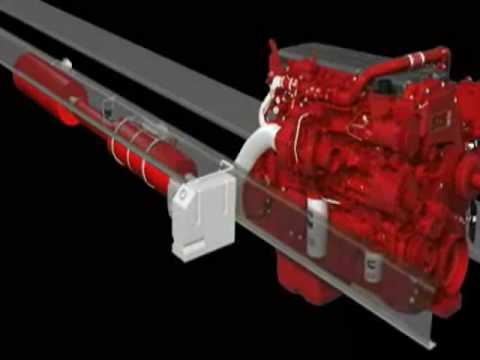Cummins Diesel Engine Emission System
For the past 3 years we have been buying International school buses CE models equipped with DT 466 Maxxforce and MaxxForce 7 engines. For 2014 International CE school buses will be coming with the Cummins ISB engines since IC can not meet emission standards.
The big difference is the DEF (diesel exhaust fluid) which will add to our maintenance routine keeping the DEF reservoirs topped up. This is the first SCR (selective catalytic reduction) diesel engines in our fleet. From what I have been hearing the DEF (diesel exhaust fluid) requires topping up every second fill up at the pumps. According to the video a diesel engine getting 6 mph will require a gallon of DEF every 200 miles.
The Cummins Aftertreatment System
It all started in 2007 with the diesel particulate filter then in 2010 came Cummins SCR technology. This is information I need to be familiar with so it’s a learning curve which is necessary to understand how everything works and how to maintain it all.
There will be dash lamps and switches as with most modern diesel engines. The lamps will tell the driver when the engine is in regeneration mode and another switch will allow the operator to activate the active regeneration process when required. The engine ECU control these circuits according to factory programming.
How Does The SCR System Work
This is the interesting part about the Cummins emissions system. It uses diesel exhaust fluid downstream that converts to ammonia reacting with NOx and a catalyst to form nitrogen gas and water. The DEF tank has a warning light on the dash when the level is getting low. If it runs out of DEF the engine will derate to 5 mph.
It’s a huge benefit in our fleet to have warning lights on the dash to alert the drivers. When the check engine light is on and the DPF light is flashing the driver needs to pull over and do a parked regen. Without dash lights to warn us from a pending engine shutdown it would be impossible to operate a fleet.
The SCR and DPF systems combined with DEF is the Cummins answer to clean emissions. All we have to do is observe and manually initiate a parked regen when required. All of our future diesel engines in the fleet are going to be Cummins because of their reliability.







